

We may earn revenue from the products available on this page and participate in affiliate programs. Learn More ›
Aaaaachooo!
Allergic rhinitis, or hay fever, is a condition that can hinder your enjoyment of outdoor activities. Characterized by sneezing, sniffling, congestion, red and itchy eyes, and just feeling low-key miserable most of the time, allergic rhinitis affects more than 24 million children and adults in the United States each year.
The culprit is pollen, a byproduct of plants’ reproductive systems that can cause an adverse immune response in some people. Because it’s an airborne particulate, pollen can be difficult to avoid—unless you want to sequester yourself in air-conditioned environments for an entire season.
Two varieties of the Asteraceae family, goldenrod and ragweed, bear much of the blame for an allergy sufferer’s annual sneezefest. Is that fair? Are these two plants really responsible for allergic rhinitis? Learn more about the differences between goldenrod vs. ragweed.
The Relationship Between Plants, Pollen, and People
A lot of people associate allergies with springtime, and with good reason. It’s in spring that trees and grasses begin to bloom and release pollen.
If you have ever parked your car under an oak or elm tree in the spring and left it there overnight, there’s a good chance that upon your return you found a dusting of chartreuse powder on the car’s hood, roof, and windshield. That’s pollen.
Some people, however, aren’t affected by tree or grass pollen. Their immune systems might play it cool in the spring, only to act up come August and into the fall. That’s when the air fills with pollen from plants like nettle, mugwort, plantain, and sorrel.
Ragweed, an annual plant that’s considered an invasive species, blooms between July and October. So does goldenrod, although it’s a noninvasive perennial plant that gardeners often grow on purpose for its medicinal and aesthetic benefits.
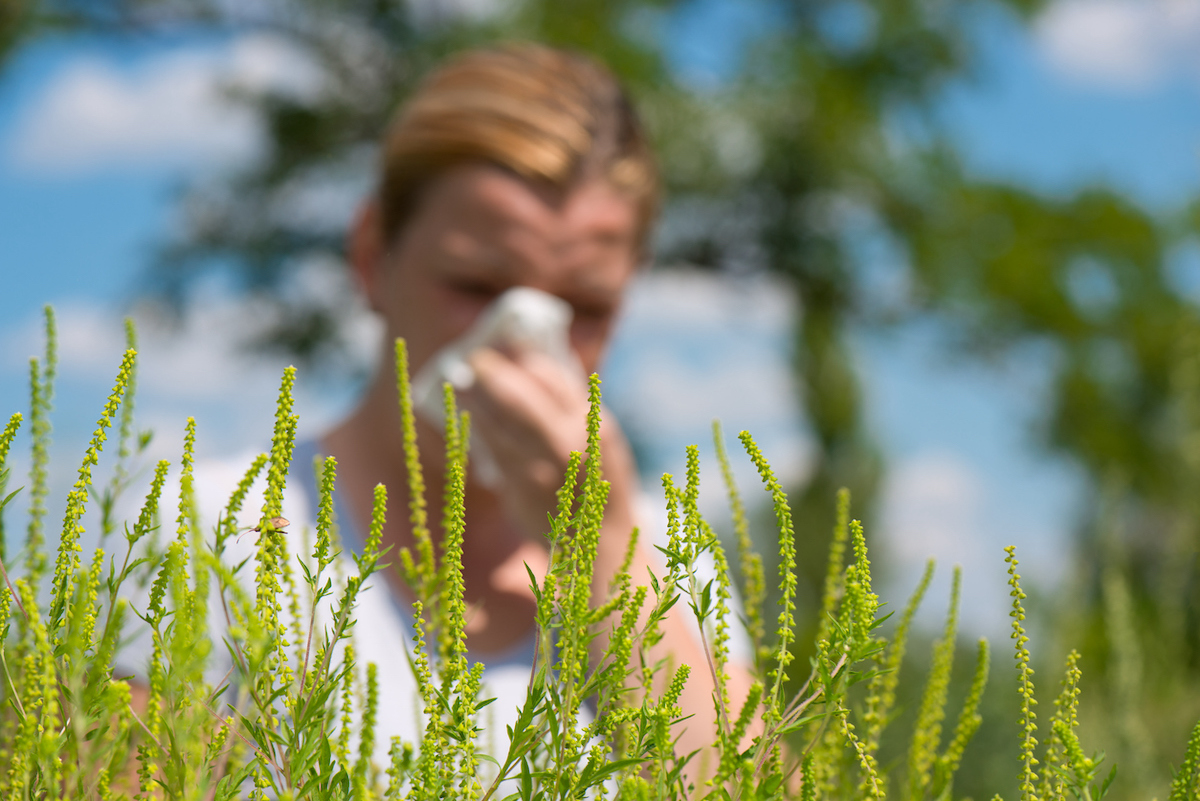
The Differences Between Goldenrod and Ragweed
Knowing the differences between ragweed and goldenrod can help allergy sufferers recognize the source of their sniffles, and help guide home garden cleanup.
Goldenrod has big yellow flowers and relies on living creatures for pollination.
Some plants are pollinated by wildlife, but most flora, including grass, conifers, and edible grains like corn, rye, and wheat, are pollinated by the wind. Goldenrod belongs to the former type. Planting goldenrod species is an effective way to attract pollinators to a garden. You might even say that this flower brings all the bees to the backyard.
According to Zahid Adnan, master gardener and founder of The Plant Bible, “ragweed has deeply lobed, fern-like leaves and inconspicuous greenish flowers, while goldenrod is recognized for its tall stems, simple elongated leaves, and vibrant yellow flower clusters.”
“Look at the leaf’s structure,” Adnan offers. An individual goldenrod plant can grow up to 3 or 4 feet high. They have long, tapered leaves, but they are usually—and easily—identified by their thickly clustered, vivid yellow flowers. Goldenrod’s blooms are relatively large, especially when compared to those of ragweed.
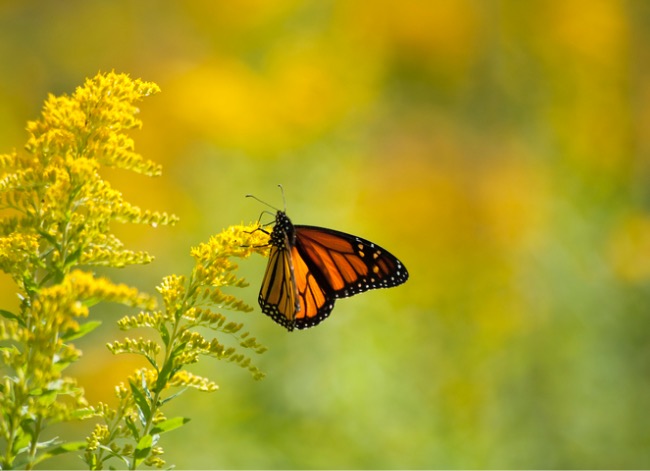
Ragweed has small green blooms and is pollinated by the wind.
When you put the two plants side by side, ragweed doesn’t look that much like goldenrod. Ragweed plants are shorter and have fern-like leaflets measuring 6 inches by 4 inches. So, what color is ragweed? Instead of goldenrod’s characteristic yellow flowers, ragweed has smaller, stingy, decidedly green blooms that can be difficult to see, especially from a distance.
One reason that ragweed allergies are so pervasive is that the wind can disperse the pollen over an impressive distance. Ragweed pollen has been detected up to 2 miles above sea level, and 400 miles out to sea. Ragweed season generally peaks in mid-September, but anyone who’s allergic to it knows that its effects don’t truly end until the season’s first hard frost.
Ragweed triggers allergies; goldenrod usually doesn’t.
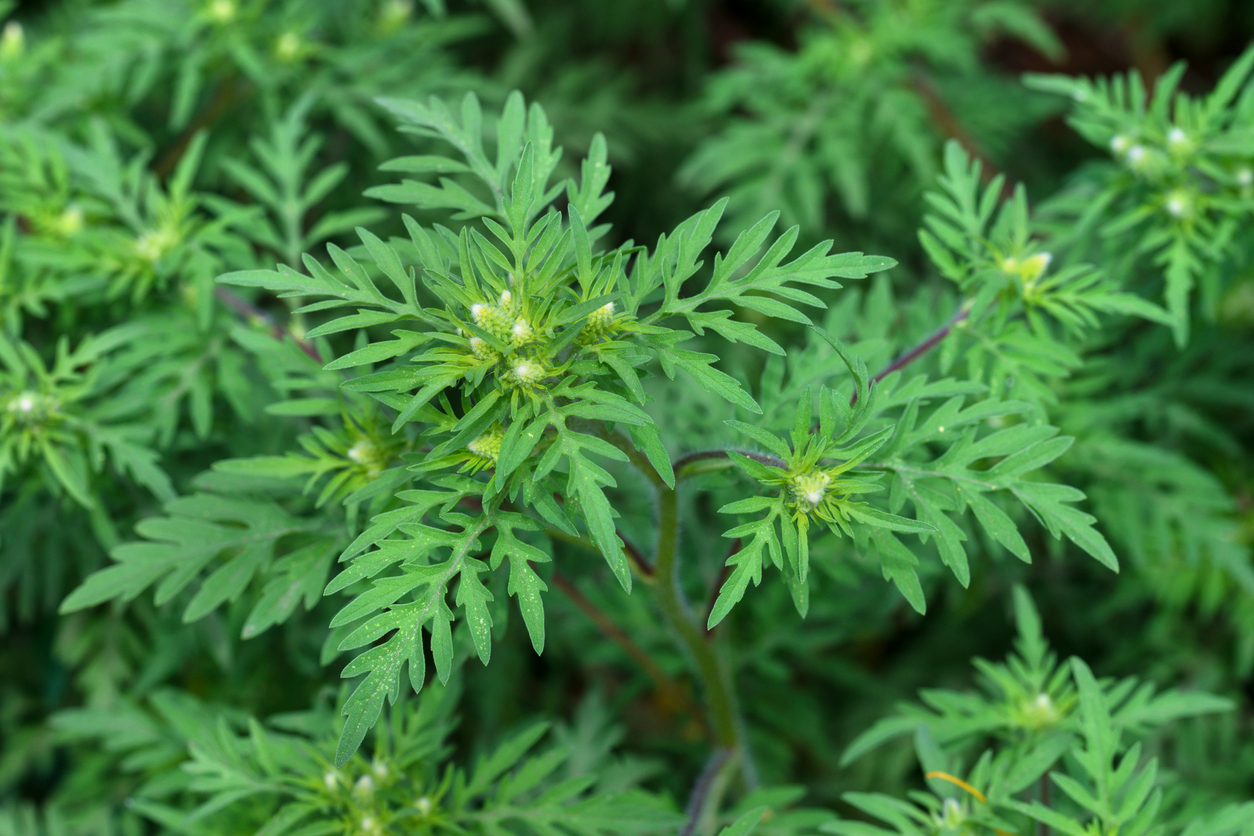
Although goldenrod can’t be ruled out entirely as an allergen, it’s highly unlikely to be the source of seasonal sniffles and sneezes. Because it’s pollinated by bees and butterflies, its large particles of pollen rarely become airborne at all, let alone travel any distance from the plant.
“Goldenrod attracts pollinators, enhances garden aesthetics, and contributes positively to the ecosystem,” Adnan explains. “Ragweed is generally undesirable due to allergenic pollen and is not cultivated for landscaping.”
Not only is goldenrod innocent when it comes to allergies, but it offers many health benefits. Its Latin name, Solidago, actually means “to heal” or “to make whole.” Some parts of the plant are edible, but goldenrod is most often made into a tea, tincture, or other herbal remedy. It has been used to treat inflammation, arthritis, wounds and skin issues, diabetes, and even tuberculosis.
So, it’s ragweed that deserves our aversion. Some 15 to 20 percent of us are sensitive to its pollen. It can also exacerbate conditions such as asthma and eczema.
Further reason to plant goldenrod and pull out ragweed, according to Adnan, is that “goldenrod can complement a garden by attracting beneficial insects, while ragweed may hinder growth of desirable plants due to its aggressive nature.”
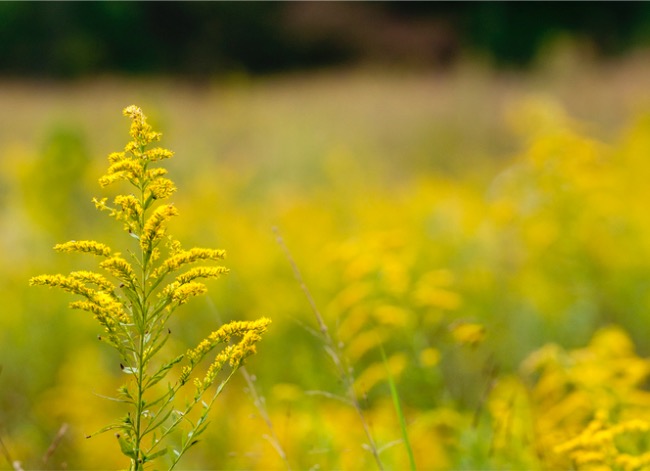
Ragweed vs. Goldenrod: A Quick Comparison
| Triggers allergies | Features bright yellow flowers | Considered a weed | Attracts beneficial insects | Native to North America | |
| Ragweed | ✓ | ✓ | ✓ | ||
| Goldenrod | ✓ | ✓ | ✓ |
How to Reduce Exposure to Pollen
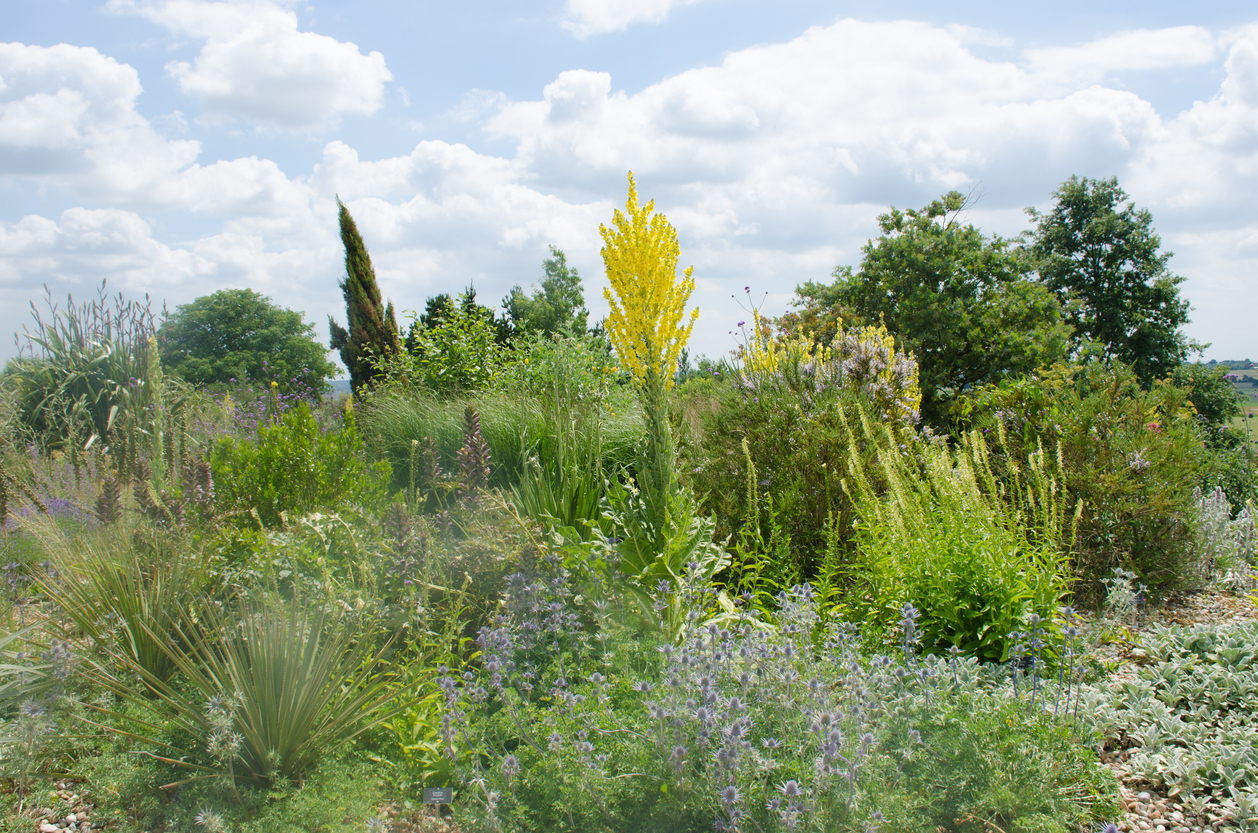
How can you cope if you’re among the 1 in 5 Americans who are sidelined by seasonal allergies? Of course, over-the-counter and prescription medicines can quell symptoms, but reducing your exposure to pollen should be the first order of business.
Start by checking the pollen count for your area. Avoid going outdoors altogether, if possible, when pollen counts are unusually high. Some other proactive steps to take include:
- In your own garden, opt for native grasses and flowers that are less likely to trigger allergies.
- Maintain good garden hygiene to reduce mold and other potential allergens.
- Keep house and car windows closed to prevent pollen from entering your space.
- Stay indoors between 10 a.m. and 4 p.m., when pollen levels peak.
- If you have air conditioning, use it. HEPA filters in both central systems and individual AC units can filter out more than 99 percent of pollen and other contaminants.
- Remove your shoes and leave them in the entryway or foyer. Ask guests to do the same.
- Remove outer layers of clothing when you enter the home, and promptly launder all clothing that’s been exposed to pollen.
- Take a shower to remove pollen particulates from your skin and hair after being outside.
If your seasonal allergies are severe, consider visiting an allergy clinic to determine if you’re a good candidate for immunotherapy. There are also plenty of natural remedies to try including, ironically enough, some that incorporate goldenrod.
